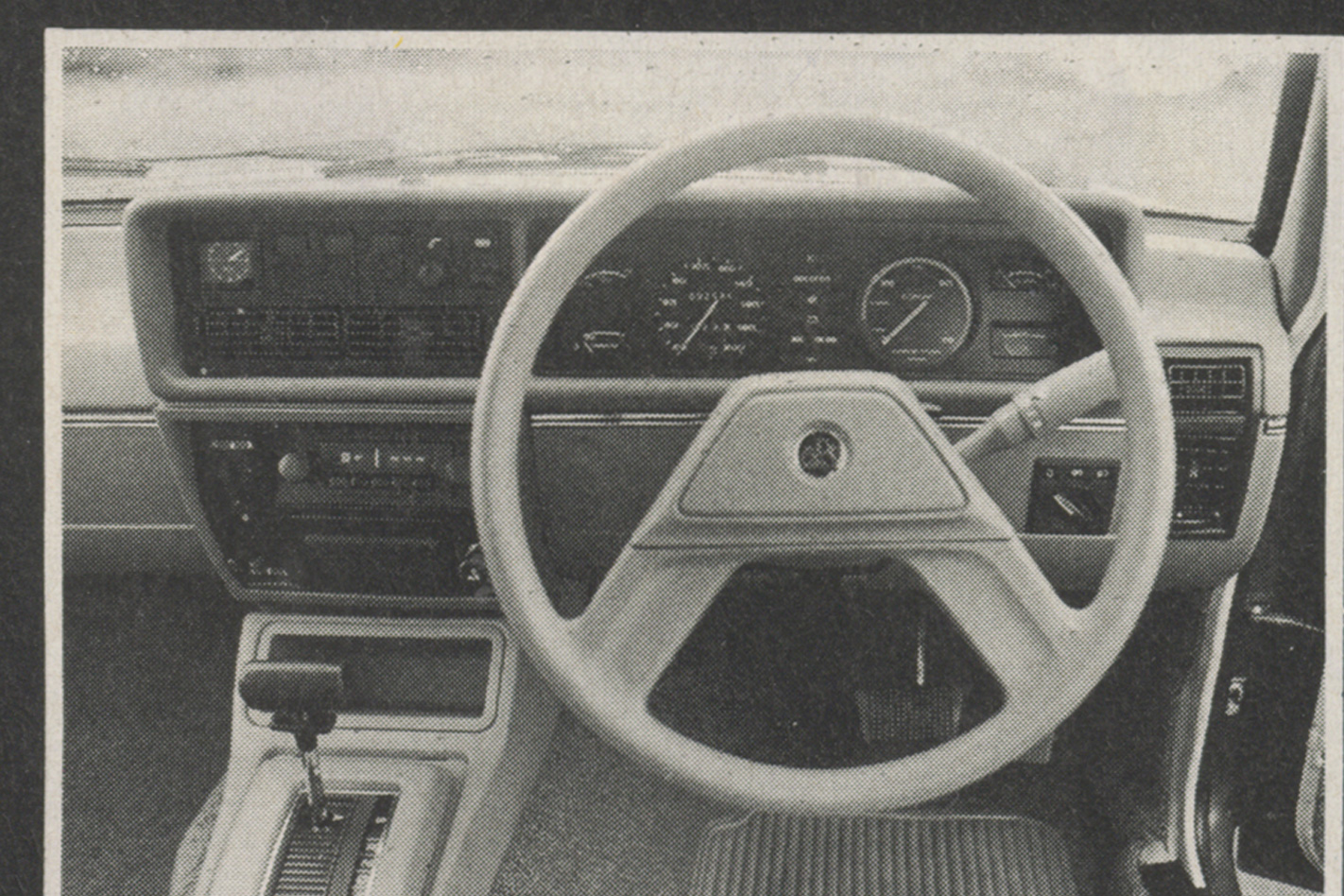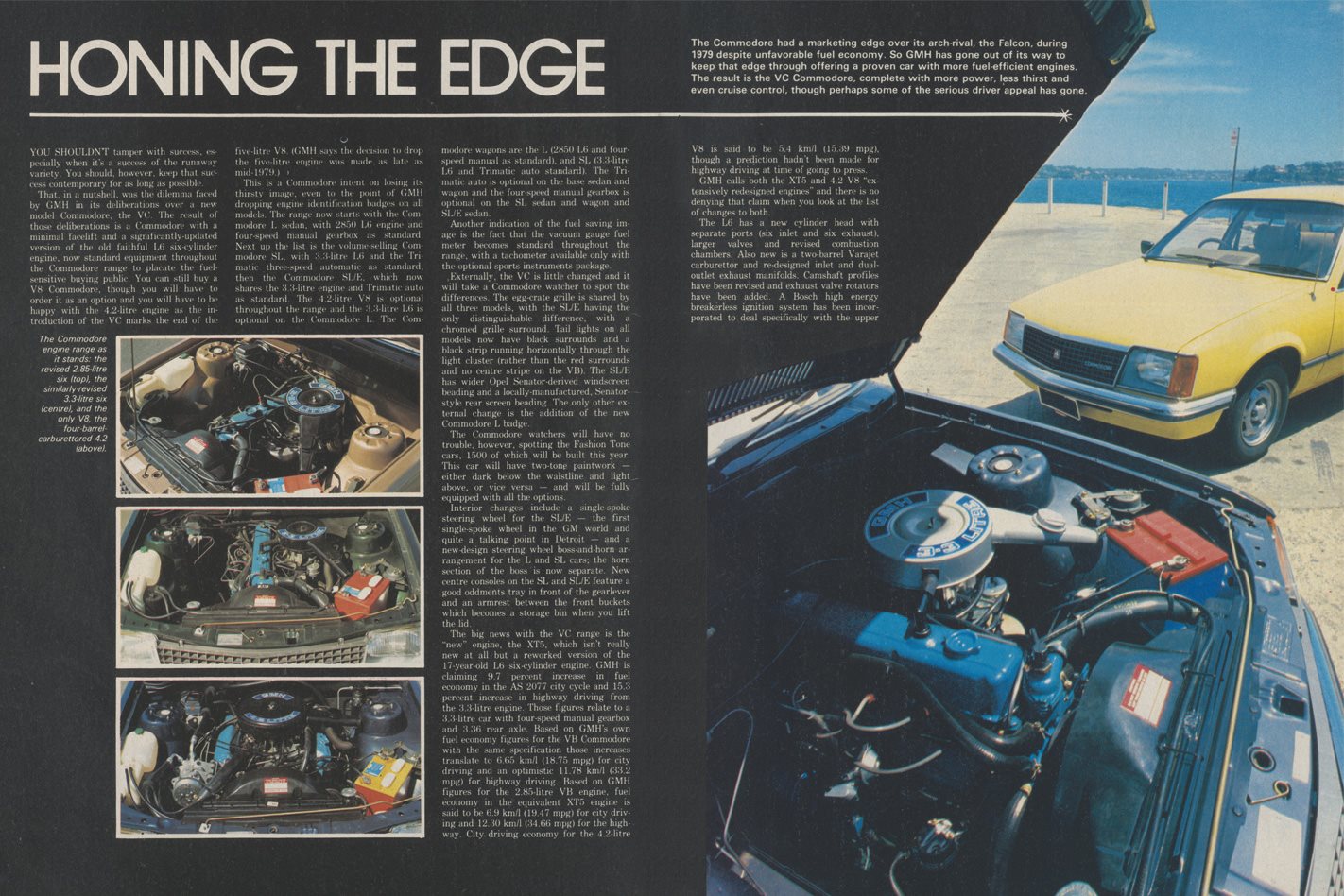THE Commodore had a marketing edge over its arch-rival, the Falcon, during 1979 despite unfavourable fuel economy.
So GMH has gone out of its way to keep that edge through offering a proven car with more fuel -efficient engines. The result is the VC Commodore, complete with more power, less thirst and even cruise control, though perhaps some of the serious driver appeal has gone.
YOU SHOULDN’T tamper with success, especially when it’s a success of the runaway variety. You should, however, keep that success contemporary for as long as possible.
That, in a nutshell, was the dilemma faced by GM in its deliberations over a new model Commodore, the VC. The result of those deliberations is a Commodore with a minimal facelift and a significantly updated version of the old faithful Lb six-cylinder engine now standard equipment throughout the Commodore range to placate the fuel-sensitive buying public – you can still buy a V8 Commodore, though you will haw to order it as an option and you will have to be happy with the 4.2-litre engine as the introduction of the VC marks the end of the five-litre VH. (GM says the decision to drop the five-litre engine was made as late as mid-1979.)
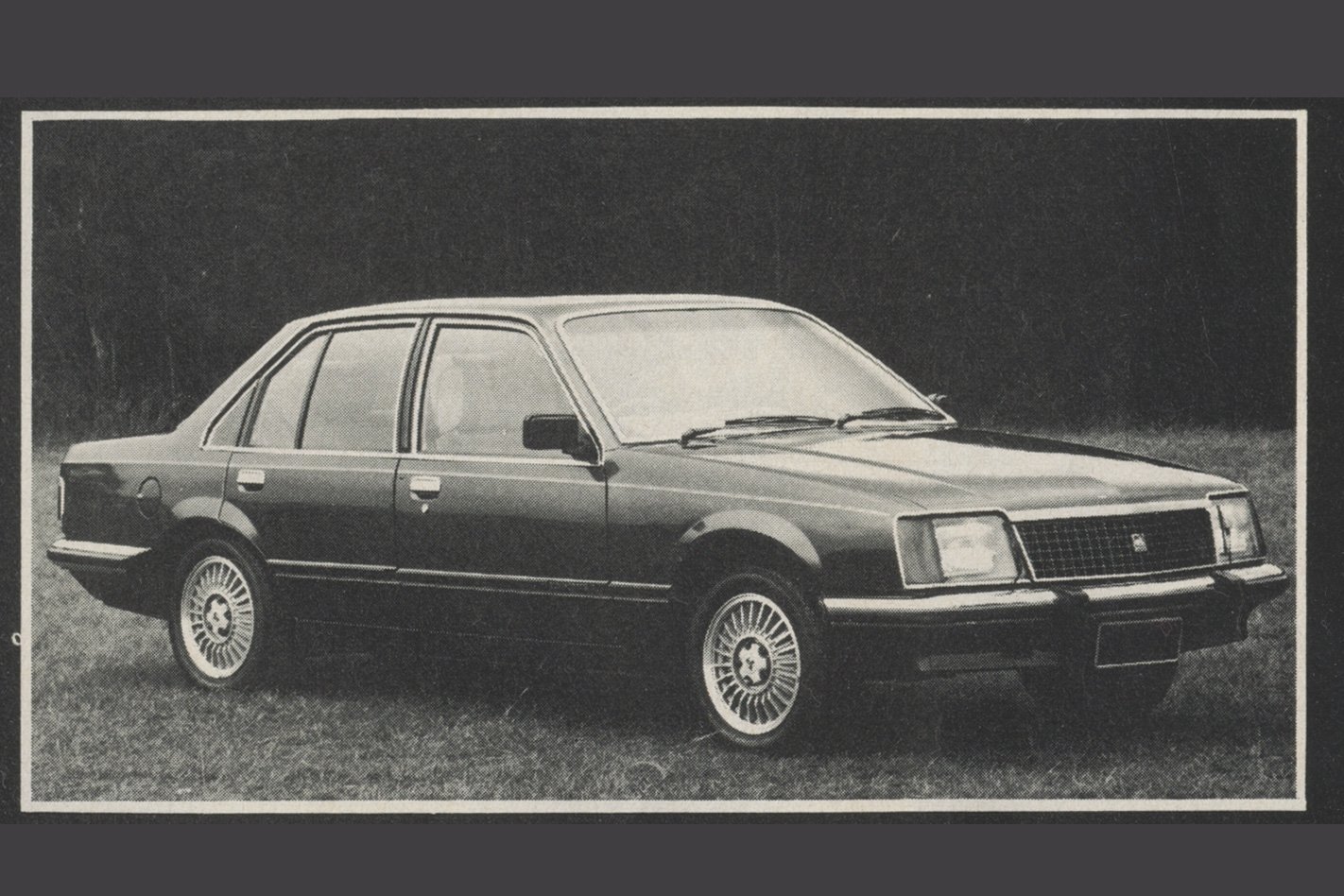
Another indication of the fuel saving image is the fact that the vacuum gauge fuel meter becomes standard throughout the range, with a tachometer available only with the optional sports instruments package.
Externally, the VC is little changed and it will take a Commodore watcher to spot the differences. The egg-crate grille is shared by all three models, with the SL/E having the only distinguishable difference, with a chromed grille surround. Tail lights on all models now have black surrounds and a black strip running horizon tally through the light cluster (rather than the red surrounds and no centre stripe on the V8) The SL/E has wider Opel Senator-derived windscreen beading and a locally-manufactured, Senator-style rear screen beading. The only other external change is the addition of the new Commodore L badge.
The Commodore watchers will have no trouble, however, spotting the Fashion Tone cars, 1500 of which will be built this year. This car will have two-tone paintwork – either dark below the waistline and light above, or vice versa – and will be fully equipped with all the options.
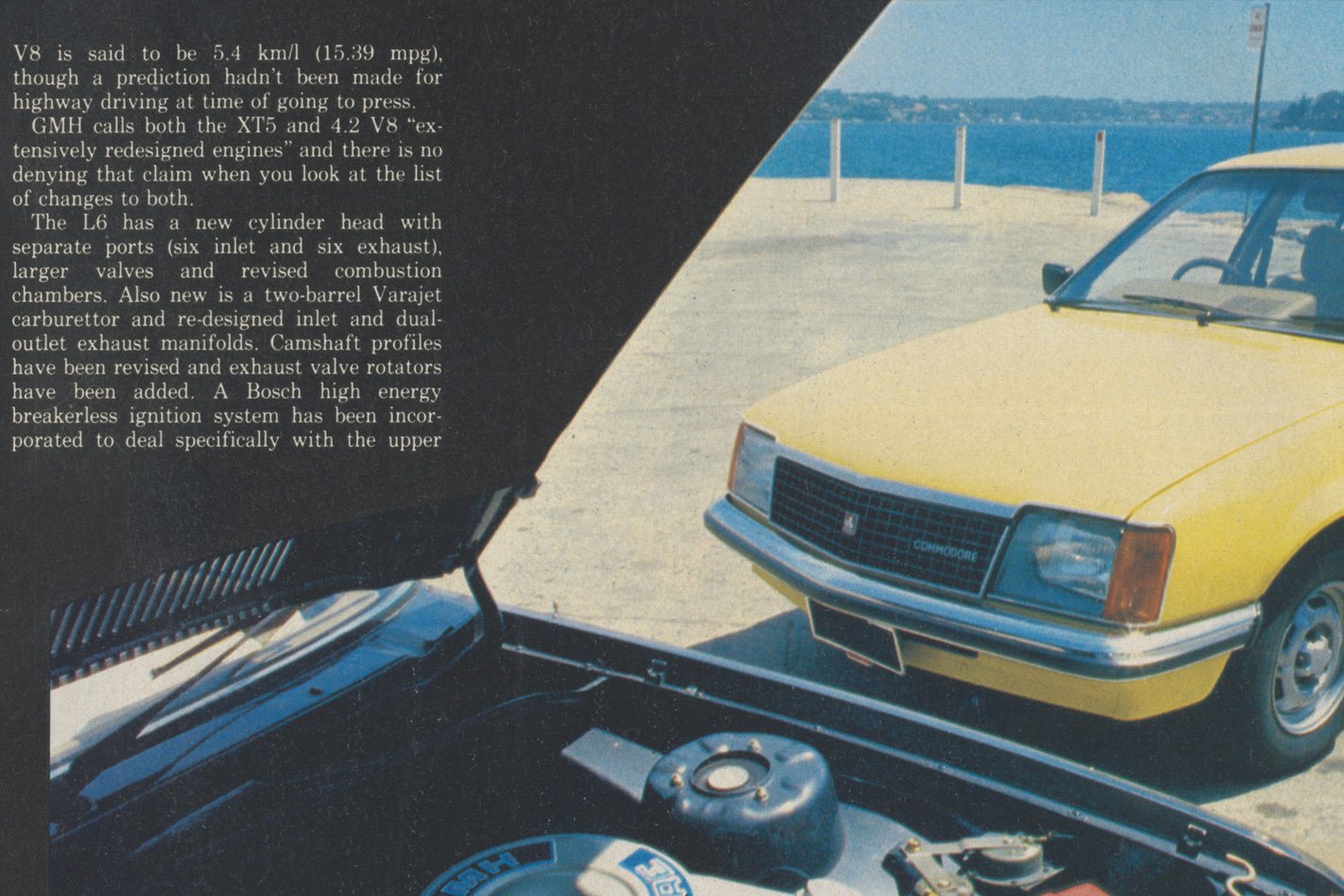
The big news with the VC range is the “new” engine, the XT5, which isn’t really new at all but a reworked version of the 17-year-old L6 six-cylinder engine. GMH is claiming 9.7 percent increase in fuel economy in the AS 2077 city cycle and 15.3 percent increase in highway driving from the 3.3-litre engine. Those figures relate to a 3.3-litre car with four-speed manual gearbox and 3.36 rear axle. Based on GMH’s own fuel economy figures for the VB Commodore with the same specification those increases translate to 6.65 km/l (18.75 mpg) for city driving and an optimistic 11.78 km/l (33.2 mpg) for highway driving. Based on GMH figures for the 2.85-litre VB engine, fuel economy in the equivalent XTG engine is said to be 6.9 km/l (19.47 mpg) for city driving and 12.30 km/l (34.66 mpg) for the highway.
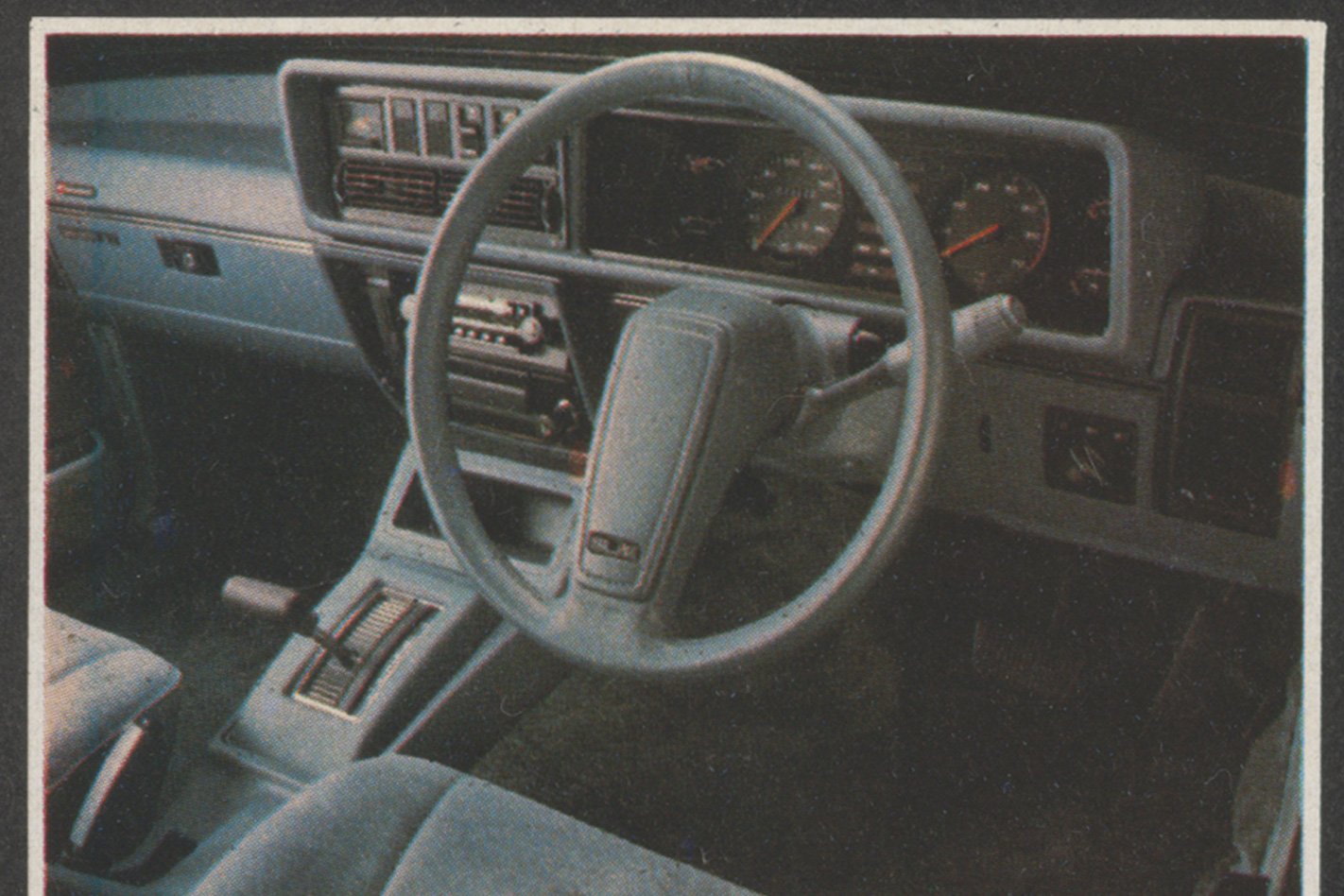
The spark plugs now have an extended reach to make for more even combustion and the pistons have been given a thicker top deck and strengthening. The connecting rods are stronger and premium quality main and conrod bearings have been used. Power heat valves have been incorporated into the engine. The compression ratio has been lowered to 9.0 to 1 for both the 2.85 L6 and 4.2 V8 and 8.8 to 1 for the 3.3 L6. The valve lifters now have increased oil flow thanks to the design of the new head. Ignition leads are now 8 mm fibre-reinforced silicon rubber with carbon-impregnated fibreglass filaments. And the 3.3-litre engine gets a new 12-counterweight crankshaft and torsional damper to cope with the bigger crankshaft throw of the larger six-cylinder and to smooth out the reciprocating forces along the crank (at the expense of an extra two kilograms).

The 4.2-litre V8 also has new cylinder heads, this time with revised exhaust gas crossover. Pistons are new, as are inner manifolds with improved attachment to the cylinder heads. Also new is the four-barrel Quadrajet carburettor (something a lot of people think the 4.2 V8 should have had long ago), power heat valves and a high energy breakerless ignition system similar to that on the six-cylinder engine. The compression ratio has been reduced, as mentioned above, the valve lifters now receive increased oil flow, and the ignition leads have been uprated as on the L6 engines.
Maximum power for the 4.2 V8 with the standard single exhaust is 100 kW at 4200 rpm, against the VB 4.2’s 87 kW at 4000 rpm (increased by 16 percent) and maximum torque is 269 Nm at 2000 rpm, against 271 Nm at 2000 rpm. The 4.2 with optional dual exhaust has power and torque of 115 kW at 4400 rpm and 289 Nm at 3200 rpm, compared with the VB’s 96 kW at 4400 rpm and 275 Nm at 2400 rpm.
The only change to the transmission is an increased diameter clutch, designed to cope with the extra power and for greater durability. Both sixes now have automatic chokes.
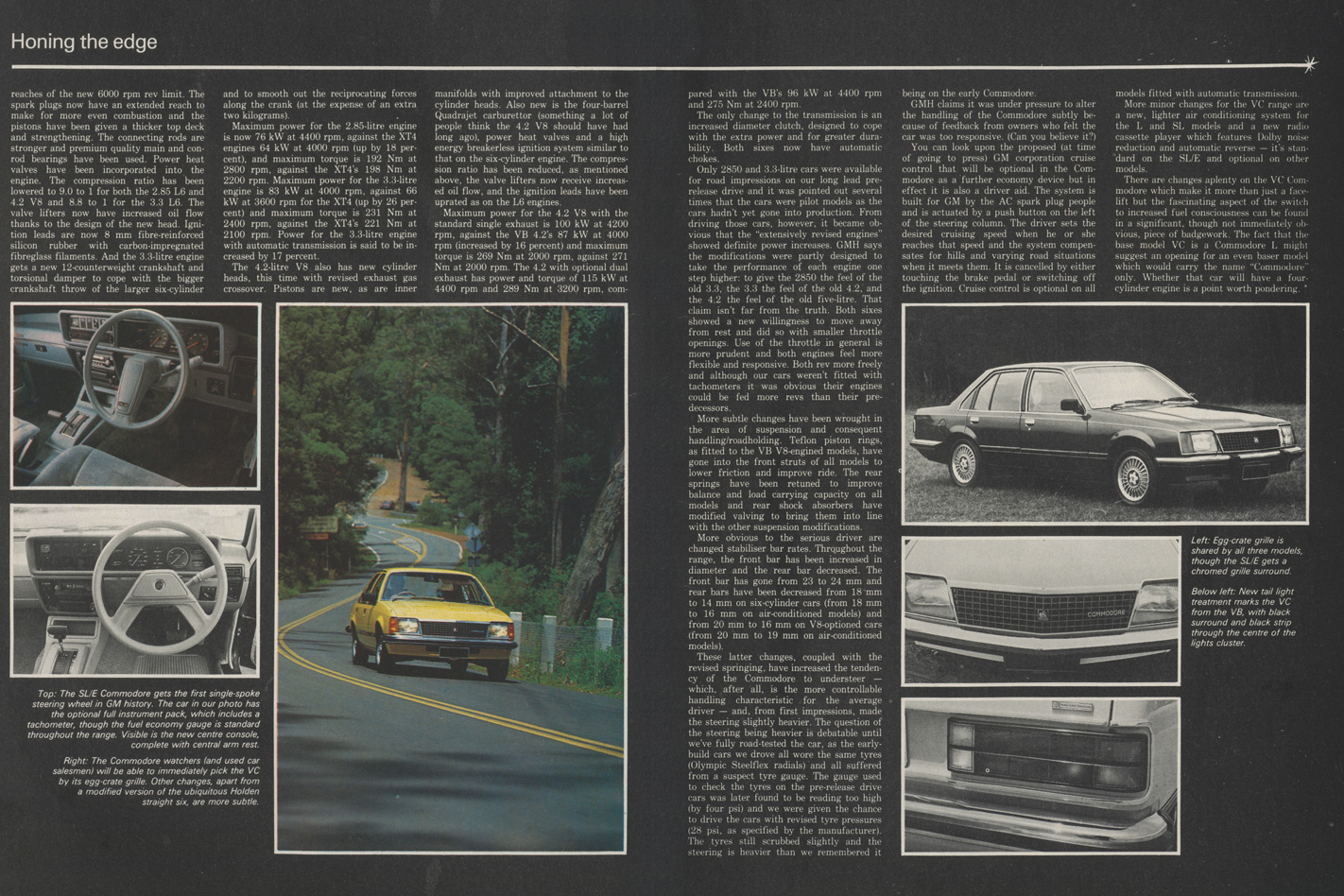
Use of the throttle in general is more prudent and both engines feel more flexible and responsive. Both rev more freely and although our cars weren’t fitted with tachometers it was obvious their engines could be fed more revs than their predecessors.
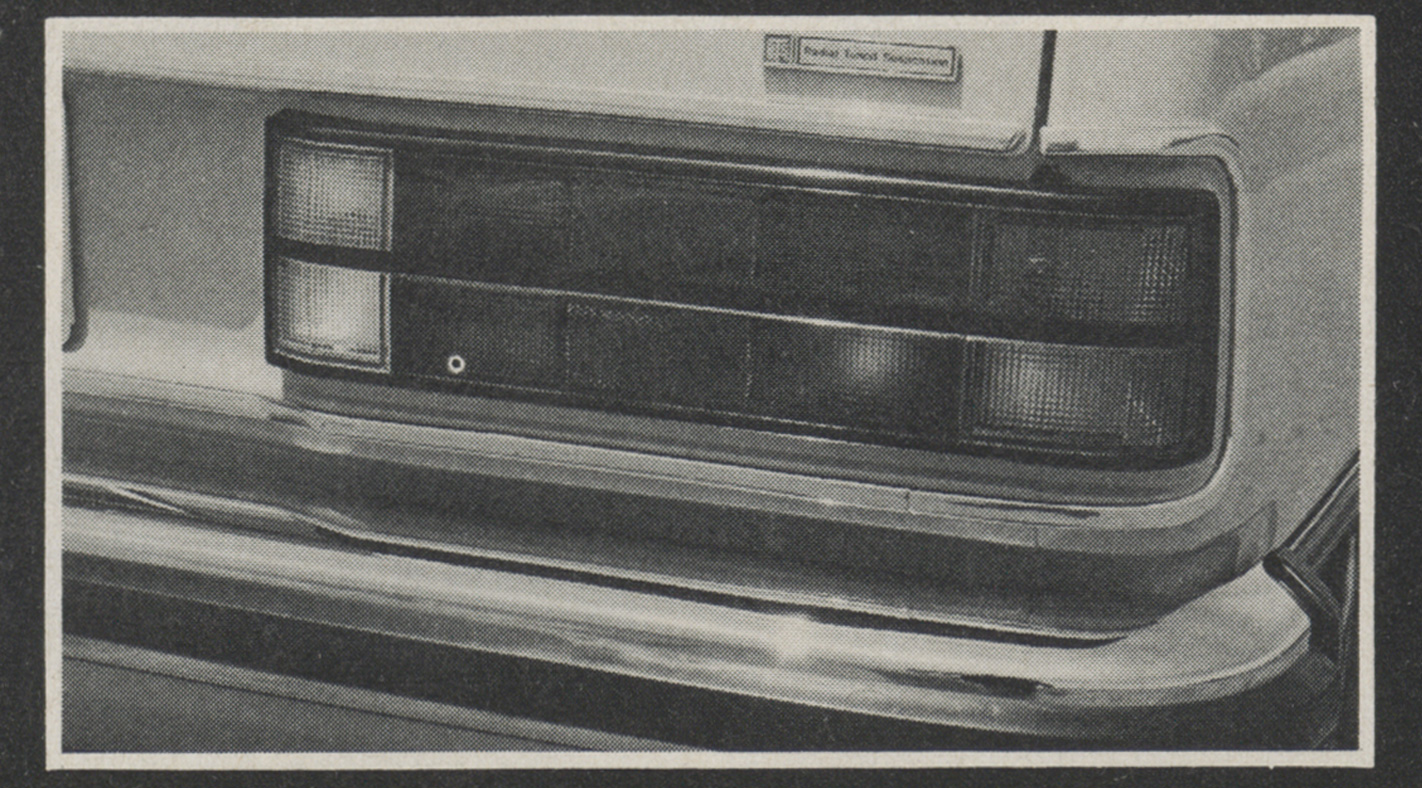
More obvious to the serious driver are changed stabiliser bar rates. Throughout the range, the front bar has been increased in diameter and the rear bar decreased. The front bar has gone from 23 to 24 mm and rear bars have been decreased from 18 mm to 14 mm on six-cylinder cars (from 18 mm to 16 mm on air-conditioned models) and from 20 mm to 16 mm on V8-optioned cars (from 20 mm to 19 mm on air-conditioned models).
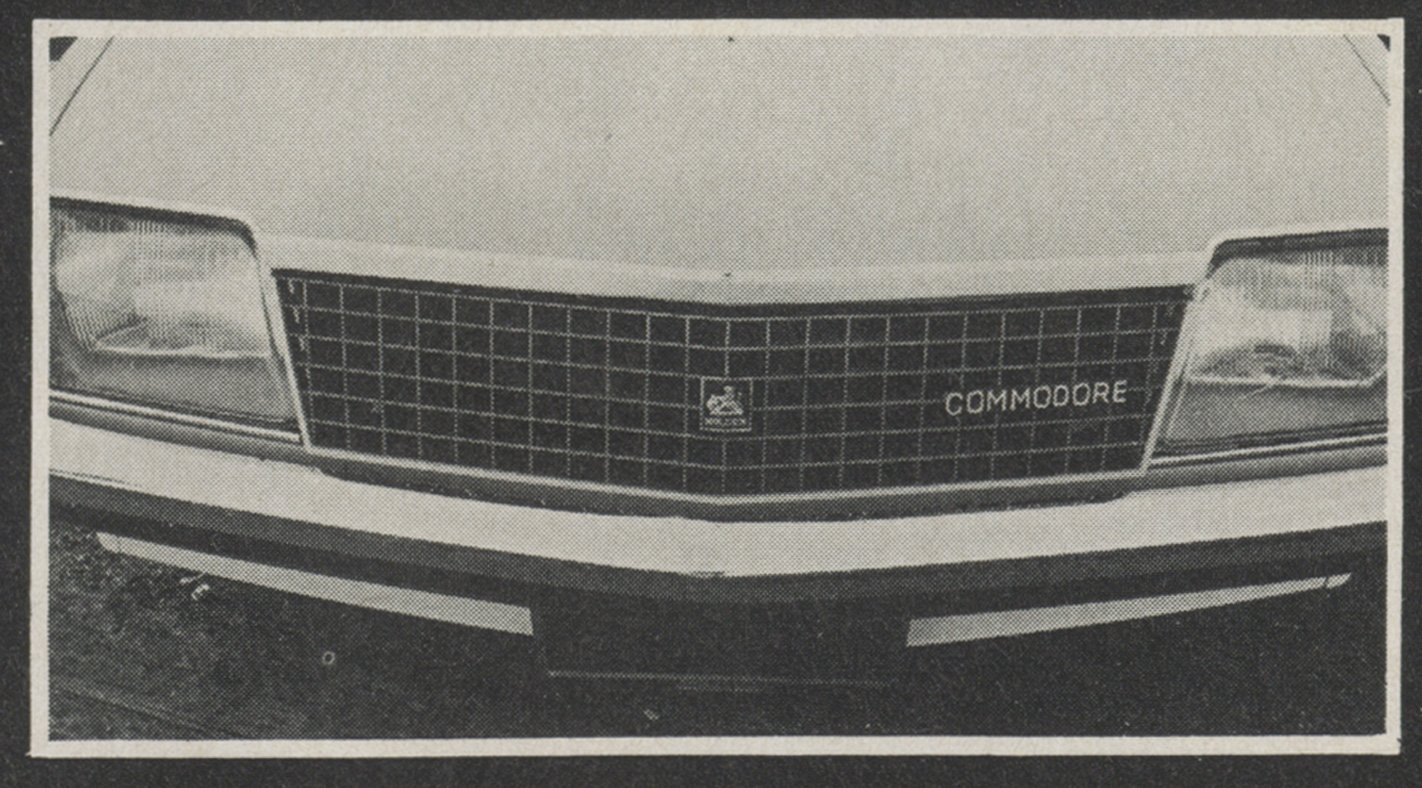
The tyres still scrubbed slightly and the steering is heavier than we remembered it being on the early Commodore. GMH claims it was under pressure to alter the handling of the Commodore subtly because of feedback from owners who felt the car was too responsive. (Can you believe it?)
You can look upon the proposed (at time of going to press) GM corporation cruise control that will be optional in the Commodore as a ‘further economy device but in effect it is also a driver aid. The system is built for GM by the AC spark plug people and is actuated by a push button on the left of the steering column. The driver sets the desired cruising speed when he or she reaches that speed and the system compensates for hills and varying road situations when it meets them. It is cancelled by either touching the brake pedal or switching off the ignition. Cruise control is optional on all models fitted with automatic transmission.
More minor changes for the VC range are a new, lighter air conditioning system for the L and SL models and a new radio cassette player which features Dolby noise reduction and automatic reverse – it’s standard on the SL/E and optional on other models.
